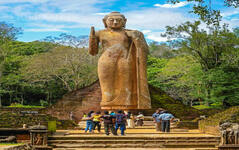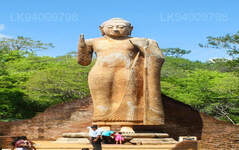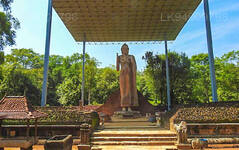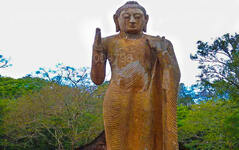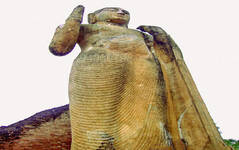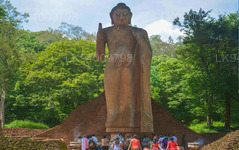Maligawila Buddha Statue
The Maligawila Buddha statue is a standing statue of the Buddha in Sri Lanka and has been carved out of a large limestone rock during the 7th century by a prince named Agrabodhi. It is the tallest free-standing ancient statue of the Buddha found in the country. It was broken into a number of pieces by the time it was found in 1951. The Maligawila Buddha statue is located close to the village of Maligawila in the Moneragala District of the Uva Province in Sri Lanka. It has been carved from a single large limestone rock, and is considered to be the tallest ancient free-standing image in Sri Lanka, with a height of 37 feet and 10 inches. Along with the Buddha statues of Avukana and Buduruwagala, the Maligawila Buddha statue is considered one of the best examples of the standing image of the Buddha of ancient Sri Lanka. It bears a close resemblance to the Avukana statue, and depicts the same Asisa Mudra, a variation of the Abhaya Mudra depicting that The Buddha clutches the robe at the left shoulder, while the right hand is raised to the right shoulder.
Ruins in the precincts around the statue indicate that there existed an image house of about 80 feet in length and breadth, with 4 feet thick walls and its height is calculated to be around 65 feet. The statue was discovered in 1951, fallen from its pedestal and lying broken to pieces. Before that, it had been damaged by treasure hunters. A 1974 attempt to raise the Maligawila statue ended in failure. However, another attempt was made in 1980 under then-president Ranasinghe Premadasa. Several of the broken pieces had been damaged, including the right hand, face and feet; these were repaired before reconstructing the statue and re-erecting it. This has been described as a “very significant task” carried out under Premadasa’s direction. The Maligawila Buddha statue attracts a large number of pilgrims every year.

